Mieczysław Weinberg: Complete Violin Sonatas, Volume Three
If Mieczysław Weinberg had lived for another decade or so after his death in 1996, he would have seen his status change from poorly known outlier to general acceptance as one of the major twentieth-century composers. His violin works have likewise been recognised as major additions to the repertoire. Since Yuri Kalnits and Michael Csányi-Wills began what will be a four-volume survey of Mieczysław Weinberg’s music for violin and piano, other musicians have discovered and recorded many of these masterworks, but on its completion this cycle will still be the first to record all of Weinberg’s violin works.
Yuri Kalnits, violin
Michael Csányi-Wills, piano
Listen To This Recording:
-
Sonata No. 3 for Violin and Piano, Op. 37 (1947)
- I Allegro moderato
- II Andantino
- III Allegretto cantabile – Lento (quasi adagio)
- ♪ = 208 (bars 1–71) –
- ♩ = 84; molto espressivo (bars 72–136) –
- ♩ = 63 (bars 137–81) –
- ♩ = 126 (bars 182–287) –
- ♩. = 92; con fuoco (bars 288–581) –
- ♩ = 116 (bars 582–96) –
- ♩ = 69 (bars 597–619) –
- ♪ = 152 (bars 620–741)
- I Moderato –
- II Adagio –
- III Moderato – Adagio
Sonata No. 3 for Violin Solo, Op. 126 (1979)
Sonata No. 6 for Violin and Piano, Op. 136bis (1982)
FIRST COMPLETE RECORDING
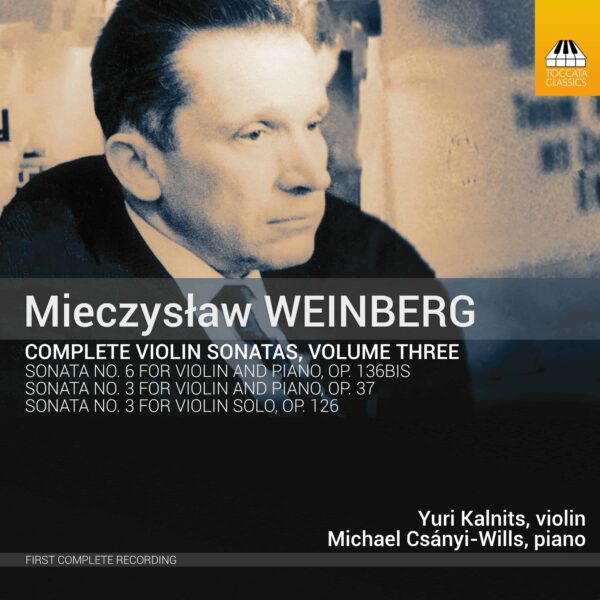
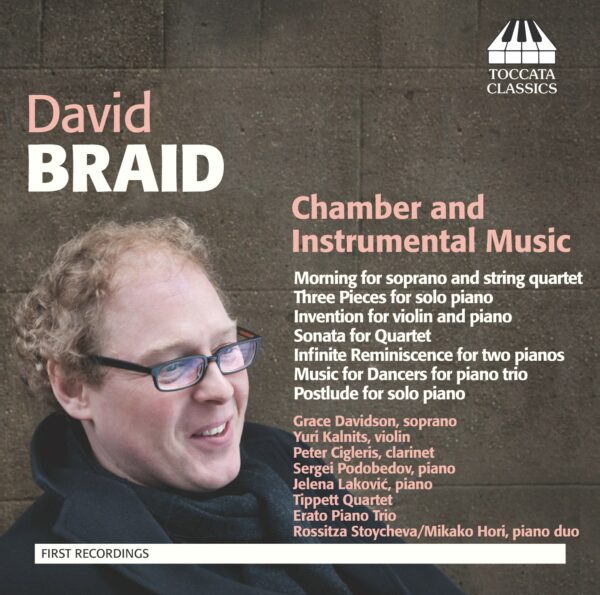
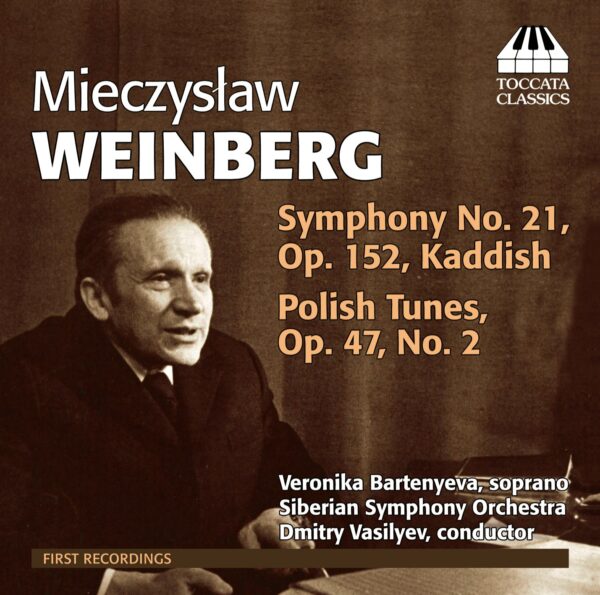
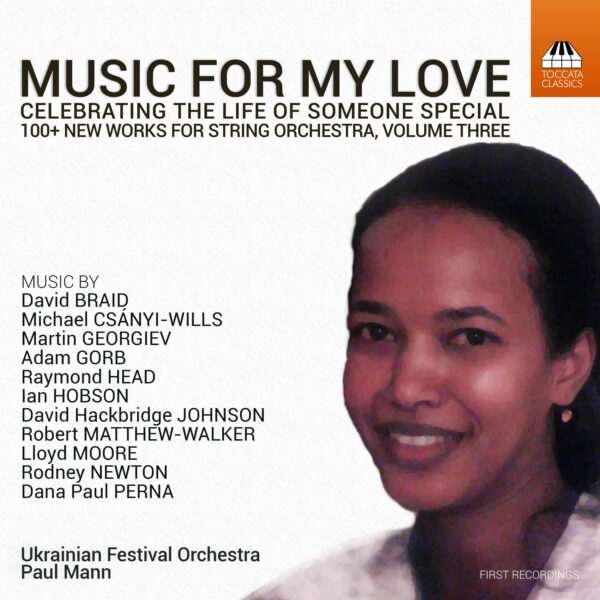
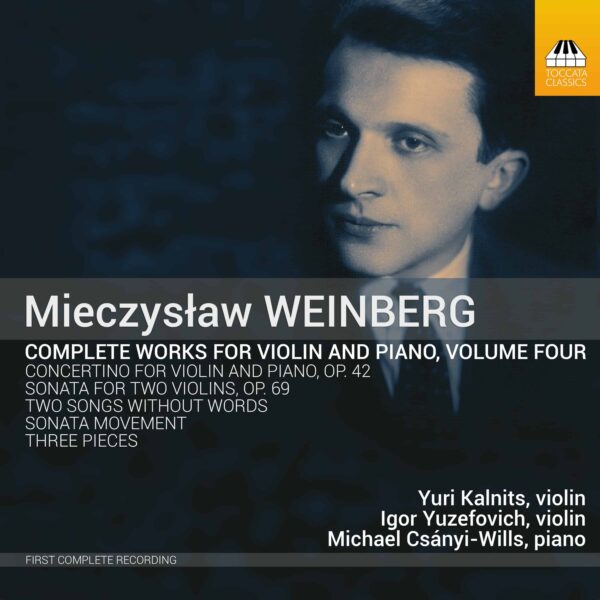
MusicWeb International :
‘three pieces here are quite substantial enough to make the issue a good stand-alone representative sample of Weinberg’s violin music. […]
For the duo sonatas I have heard only this Kalnits (violin) and Michael Csanyi-Wills partnership and found them very satisfying indeed.’
—Roy Westbrook, MusicWeb International
music-weinberg.net :
‘ Yuri Kalnits performs these towering accomplishments with much passion and aplomb, sometimes sounding a little improvisatory, but never mannered. Repeated listening reveals the depth and insight which Kalnits brings to the music.’
—music-weinberg.net
Opus Klassiek :
‘In het begeleidende boekje is een uitstekend verhaal opgetekend van de Engelse musicus en musicoloog David Fanning, die in 2019 de laatste hand heeft gelegd aan een tweede, meer uitgebreide Weinberg-biografie die opmerkelijk genoeg nog steeds op publicatie wacht. […]
Want herhaaldelijk beluisteren van deze muziek [Vioolsonate nr. 6] voelt meer en meer als gluren in de ziel van de schrijver ervan.
Het uitvoerende duo treft ook in de Vioolsonate nr. 3 op. 37 uit 1947 de juiste toon. Eerder als medium dan als interpreet van de heldere maar bescheiden moderne taal die Weinberg in dit werk etaleert bewijzen de spelers op dit moment de beste ambassadeurs te zijn. Wat vooral induk maakt is de eerlijke en schijnbaar objectieve benadering van de muziek, waarmee het duo kenbaar maakt de muziek niet te willen gebruiken als het vehikel van een mogelijk extreem persoonlijke interpretatie, waarin bijvoorbeeld de persoonlijke omstandigheden van Weinbergs leven rond het ontstaan van zijn muziek ook uitdrukking moeten vinden. Gelijk Weinberg tijdens zijn leven nooit de drang had zijn muziek sterk te promoten, zo klinkt in zijn muziek ook vaak die introverte maar authentieke expressie.
Ook de tragedie van het verlies van zijn ouders en zus is verhuld aanwezig in diverse composities, zoals in het Strijkkwartet nr. 15 op. 124 (opgedragen aan zijn moeder) en nr. 16 op. 130 (aan zijn zus). Weinbergs enige hommage aan zijn vader, tot de oorlog violist en leider van een joods theaterorkest in Warschau, is de Sonate nr. 3 voor viool solo. Aanvankelijk een granieten blok waar door de violist behoorlijk wat dissonantie moet worden ‘uitgezaagd’, verzachten de randen en groeven in het muzikale gesteente zich en verwijst de textuur in de laatste twee van de acht deeltjes zelfs naar Joodse muziek. Violist Kalnits lijkt zich ten volle bewust van dit verloop en laat het gebeuren: hij hoeft niets aan te zetten of te overdrijven, niet in het luide, scherpe, harde en evenmin in het zachte of romantische. […]
Kalnits is in dit repertoire absoluut de eerste keus, niet in het minst om de fantastische samenwerking met pianist Michael Csányi-Wills.’
English translation;
‘The accompanying booklet contains an excellent account by the English musician and musicologist David Fanning, who in 2019 completed a second, more comprehensive Weinberg biography that, remarkably, is still awaiting publication. […]
For repeatedly listening to this music [Violin Sonata No. 6] feels more and more like peering into the soul of its author.
The performing duo also strikes the right note in the Violin Sonata No. 3, Op. 37, from 1947. More as mediums than interpreters of the clear yet modest modern language Weinberg displays in this work, the players prove to be the best ambassadors at this time. What is particularly impressive is the honest and seemingly objective approach to the music, with which the duo makes it clear that they do not wish to use the music as the vehicle for a potentially extremely personal interpretation, in which, for example, the personal circumstances of Weinberg’s life surrounding the genesis of his music must also find expression. Just as Weinberg never felt the urge to strongly promote his music during his lifetime, his music often reflects that introverted yet authentic expression.
The tragedy of losing his parents and sister is also veiled in several compositions, such as in the String Quartet No. 15, Op. 124 (dedicated to his mother) and No. 16, Op. 130 (to his sister). Weinberg’s only tribute to his father, a violinist and leader of a Jewish theater orchestra in Warsaw until the war, is the Sonata No. 3 for solo violin. Initially a granite block from which the violinist must “saw” out a considerable amount of dissonance, the edges and grooves in the musical rock soften, and the texture in the last two of the eight movements even alludes to Jewish music. Violinist Kalnits seems fully aware of this progression and allows it to unfold: he doesn’t need to exaggerate or overdo anything, neither in the loud, sharp, or hard, nor in the soft or romantic. […]
Kalnits is absolutely the first choice in this repertoire, not least because of the fantastic collaboration with pianist Michael Csányi-Wills.’
—Harry-Imre Dijkstra, Opus Klassiek
Classical-Modern Music Review :
‘Yuri Kalnits gives us a committed, dynamic and wonderfully expressive performance on violin throughout. Michael Csanyi-Wills compliments Kalnits nicely on piano, making a poetic twosome that I suspect the composer would be very happy about.
The opening Sonata No. 3 (1947) has marvelous depth, bitter-sweet, tart modern presence and a glorious sense of opening onto our musical perceptions. There is endless melodic-harmonic movement that Weinberg has in common with Prokofiev and Shostakovich, and yet by this point (1947) he has his own way of unfolding it all.
The Sonata No. 3 for Violin Solo (1979) has dramatic torque and a finely exploratory resonance that gives us a leaner, more abstract projecting than the earlier work perhaps. It is fascinating and deep in its wholeness and Kalnits defines and realizes it with a grand flourish one appreciates. […]
After listening a good bit I must say that this volume in my view gives us some further aspects of Weinberg that help round out a portrait of him in chamber music form.
If you do a “Weinberg” search on the left-hand corner of this page you can find other related reviews I’ve done here. The Volume Three of the sonatas after living with for a week or so seems to me well worth your efforts to hear–for it gives us some gems of the later period and the performances are world-class. Very recommended.’
—Grego Applegate Edwards, Classical-Modern Music Review
Arcana.FM :
‘Does it all work?
Yes, not least given the widely differing concept that underlies each piece (further proof that Weinberg repeated neither himself nor other composers), as well as the undemonstrative yet searching approach of the performers. […] As a cycle for repeated listening, it should prove difficult to surpass.
Is it recommended?
Indeed, abetted by almost perfect instrumental balance and detailed notes by David Fanning. A fourth volume – which, other than the early Three Pieces, might feature the Sonata for Two Violins and Gidon Kremer’s arrangement of the 24 Preludes for cello – is keenly anticipated.’
—Richard Whitehouse, Arcana.FM